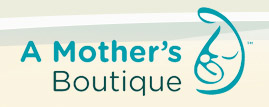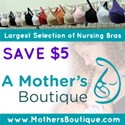by Wendy Armbruster Bell
(How a Nanny and a Good Breastpump Can Help You Reach Your Personal Breastfeeding Goals)
As the end of your maternity leave fast approaches, nursing mothers have a number of choices to maintain their breastfeeding relationships with their babies. This holds true no matter how long your maternity leave will be or if you have chosen to return to work early on your own accord.
If you are fortunate to live fairly close to your place of employment, your nanny can bring your baby to you at work for as many feedings as desired. This is especially beneficial when you first return to work as it is a transition for both you and your baby. The sustained contact will be good for both of you emotionally and will facilitate your letdown as well as help to maintain your milk supply as you both adjust to the new routine.
Remember to discuss your breastfeeding and/or pumping schedule with your employer prior to your return to work so that there are no surprises for either of you. It is also a good idea to return to work on a Wednesday or Thursday so you have a short first week. Finally, plan a dry run of your morning routine, including the drive to work, before tackling the Real McCoy. This will do wonders for your stress level on that first day of leaving baby.
Following is a typical schedule that can be adapted to suit (based on a baby that is 3-6 months old):
6:00 am: Wake up, get ready for work and eat a healthy breakfast.
7:00 am: Wake and nurse your baby.*
8:30 am: Leave for work.
9:00 am: Arrive at work.*
11:00 am: Nanny brings baby to work to nurse.
12:30 pm: Eat a nutritious lunch.
2:30 pm: Nanny brings baby to work to nurse.
5:00 pm: Leave work for the day.
5:30 pm: Arrive home, eat dinner.
6:00 pm: Nurse your baby, then bed time/bath time routine for him/her.
7:00 pm: Put baby to bed.
8:00 pm: Prepare for you work day tomorrow (pack your lunch, plan tomorrow night’s dinner).*
10:30 pm: Wake baby to nurse if he/she is not sleeping through the night yet. If baby sleeps through, you may want to pump then off to bed.
* The asterisks in the schedule indicate prime times for additional pumping if your nanny is unable to bring the baby to you for whatever reason (e.g. you are out of town on business or your baby is ill). If you will be pumping at work even once per day, you may want to invest in a hands-free pumping bra so that you can still answer emails or take phone calls while pumping. Make sure you have a comfortable chair to sit in, a footrest to raise your knees to parallel while sitting (so that you don’t hunch over) and if you have problems with letdown, a picture of your baby or an article of clothing that smells like him/her. Remember that you should wait 4-6 weeks to introduce a bottle to your newborn to reduce the chance of nipple confusion.
If you don’t have an office with a lock on the door, then you will also need to find a private room that you can use for nursing and/or pumping – and try to avoid the restroom! Approach your employer to set-up a lactation room. You can pitch him or her on the benefits of having a breastfeeding mother on staff. Never mind the extensive long-term health benefits. In the short-term, research shows that:
- breastfed babies are sick less often and when they do get sick, then aren’t as sick
- breastfed babies are less likely to have ear infections, colic, diarrhea and other childhood illnesses
- babies who are breastfed are 10 times less likely to be hospitalized during the first year
- nursing mothers have a lower incidence of postpartum hemorrhage
- nursing mothers enjoy a decreased risk of iron-deficiency anemia (delayed return of menstruation) and the longer the mother nurses, the stronger this effect
Therefore, because you and your baby will be sick less frequently, your employer will benefit from reduced sick days and in turn, increased productivity from you!
After your baby starts solids at around age 6 months, whether this is before or after you return to work, he/she will be taking less breastmilk. If you do not live close enough to work to warrant having your nanny bring the baby to you, you may choose to pump during the day and breastfeed first thing in the morning and at bedtime as well as on the weekend. Your nanny can feed your baby one bottle of expressed breastmilk in the afternoon (2:30-3:00 pm) and you will still successfully maintain your supply. These types of arrangements along with an open mind, flexibility and support will help you reach your personal breastfeeding goals.
Speaking of support, a lack thereof is one of the top reasons for the extreme decline in breastfeeding rates after moms leave the hospital. The best thing you can do is to keep the following in mind:
- breastfeeding is not “instinctual”, both mom and baby need to learn how to do it
- if you are having difficulties, ASK FOR HELP from your Public Health Nurse, Doctor, Midwife, Doula, Lactation Consultant, La Leche League Leader, friend or family member
- there appears to be a learning curve for the first 6-7 weeks postpartum – if you can persevere until then, you are usually home-free
- resist the temptation to give your baby formula – as little as one feed per day can cause your supply to diminish – keep a small stash of breastmilk in the freezer instead
Following is a schedule for a baby that is 6 months or older:
6:00 am: Wake up, get ready for work and eat a healthy breakfast.
7:00 am: Wake and nurse your baby.*
8:30 am: Leave for work.
9:00 am: Arrive at work.*
12:30 pm: Eat a nutritious lunch.
2:30 pm: Pumping break.
5:00 pm: Leave work for the day.
5:30 pm: Arrive home, eat dinner.
6:15 pm: Nurse your baby, then bed time/bath time routine.
7:15 pm: Put baby to bed.
8:00 pm: Prepare for you work day tomorrow (pack your lunch, plan tomorrow night’s dinner).*
10:30 pm: Wake baby to nurse if he/she is not sleeping through the night yet. If baby sleeps through, you may want to pump then off to bed.
Many people are under the impression that a live-in nanny is out of reach financially; however, if you do the math, this choice is actually quite affordable compared to group daycare, especially if you have more than one child. Remember, there is also the option of arranging a “nanny share” with a friend, family member or co-worker.
As with many “seemingly” insurmountable challenges in life, one day you will look back on your choice to maintain breastfeeding after your return to work and say, “It was a bit of a challenge initially, but soon it was just another routine. I did it and it was absolutely worth it!”
Wendy Armbruster Bell is the Founder & Creative Director of Snugabell Mom & Baby Gear, creators of PumpEase hands-free pumping supports. When she is not helping thousands of breastfeeding Moms around the world pump hands-free and in style, she and her husband Mike are busy raising their two young daughters in beautiful British Columbia, Canada. She has been featured on Cool Mom Picks, Parents TV, Breakfast Television, Celebrity Baby Scoop and was named a Top Mompreneur for 2009 by The Mompreneur Magazine. Wendy can be contacted at wendy@snugabell.com or toll-free at 1.866.963.SNUG (7684).
Pump Ease and Snugabell are also proud to be sponsors of the Mommy News & Views Blogiversary Celebration! Please visit the Review and Give-away of Pump Ease Hands-Free Pumping Support in our Blogiversary section.
Did you work while breastfeeding your baby? What were your experiences pumping or breastfeeding at work? Please share any tips that you have with our readers by leaving a comment below.











“Your nanny can bring the baby to work for as many feedings as desired”?!?! Who in the world can afford a private nanny?
Hi Logan, While it’s true that not everyone can afford a private nanny, I think Wendy’s point is that they can be much more affordable than one might think – especially a live-in nanny. I had a nanny when my son was little. She didn’t live-in, but she was quite affordable – only a small amount more expensive than full-time daycare. And she traveled with me on all of my business trips – so she was a life-saver! Many people think that nanny’s are out of their reach, but they can be quite affordable, especially if you have more than one child and are paying for multiple day care bills. — Judy
[…] This post was mentioned on Twitter by Judy Masucci, Wendy ArmbrusterBell and Low Iron, Dominique. Dominique said: RT from @MommyNews…Returning 2 Work?You CAN Continue 2 Exclusively Breastfeed! http://bit.ly/2qPjFX #bfing #breastfeeding (via @snugabell) […]
[…] Price Life Exacts For Granting Peace, by Shannon O’Donnell, Pumpin’ Pal, International Returning To Work? Yes, You CAN Continue To Exclusively Breastfeed!, by Wendy Armbruster Bell, Snugabell Mom & Baby Gear Tongue Tie and Newborns, by Dusk […]